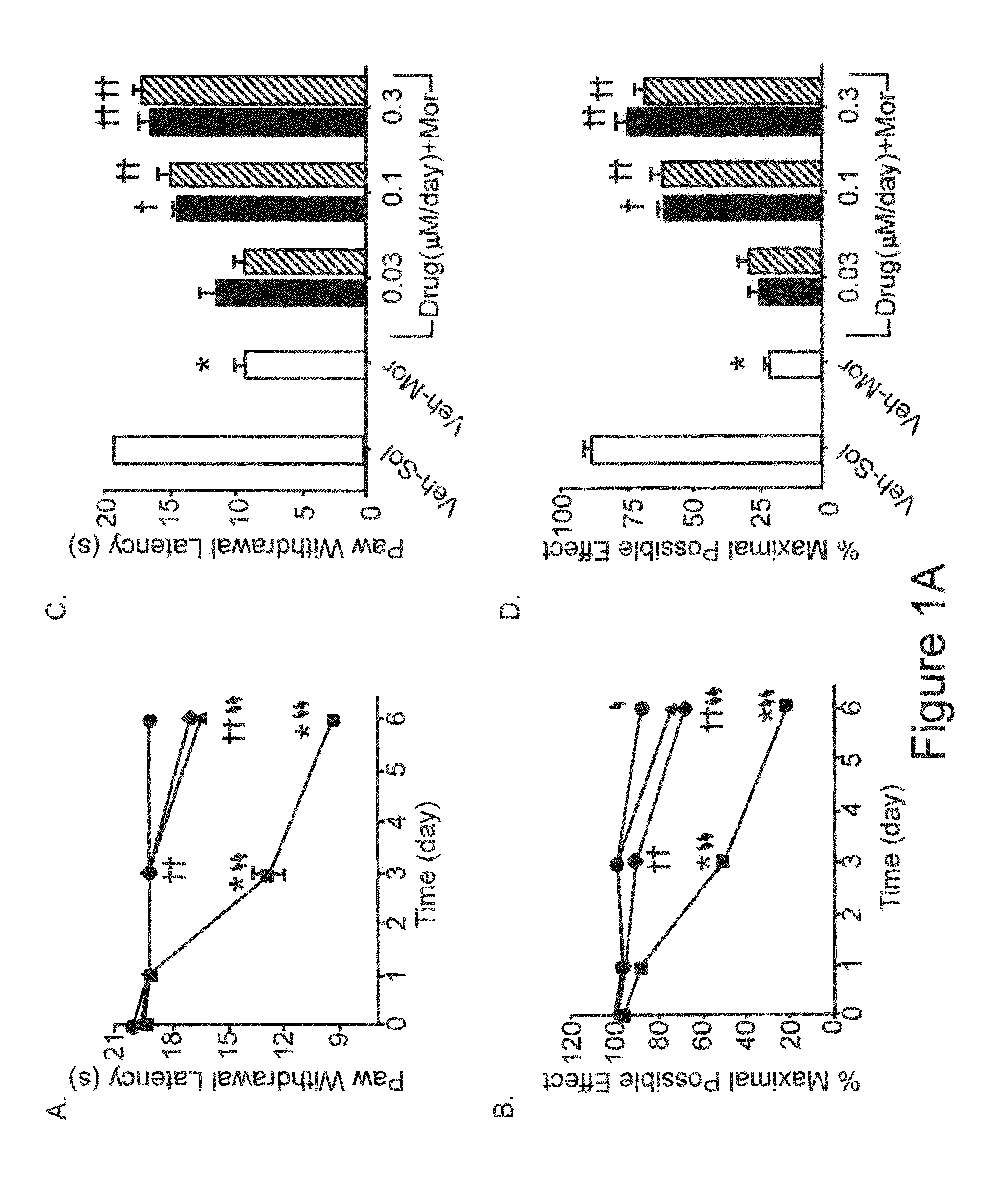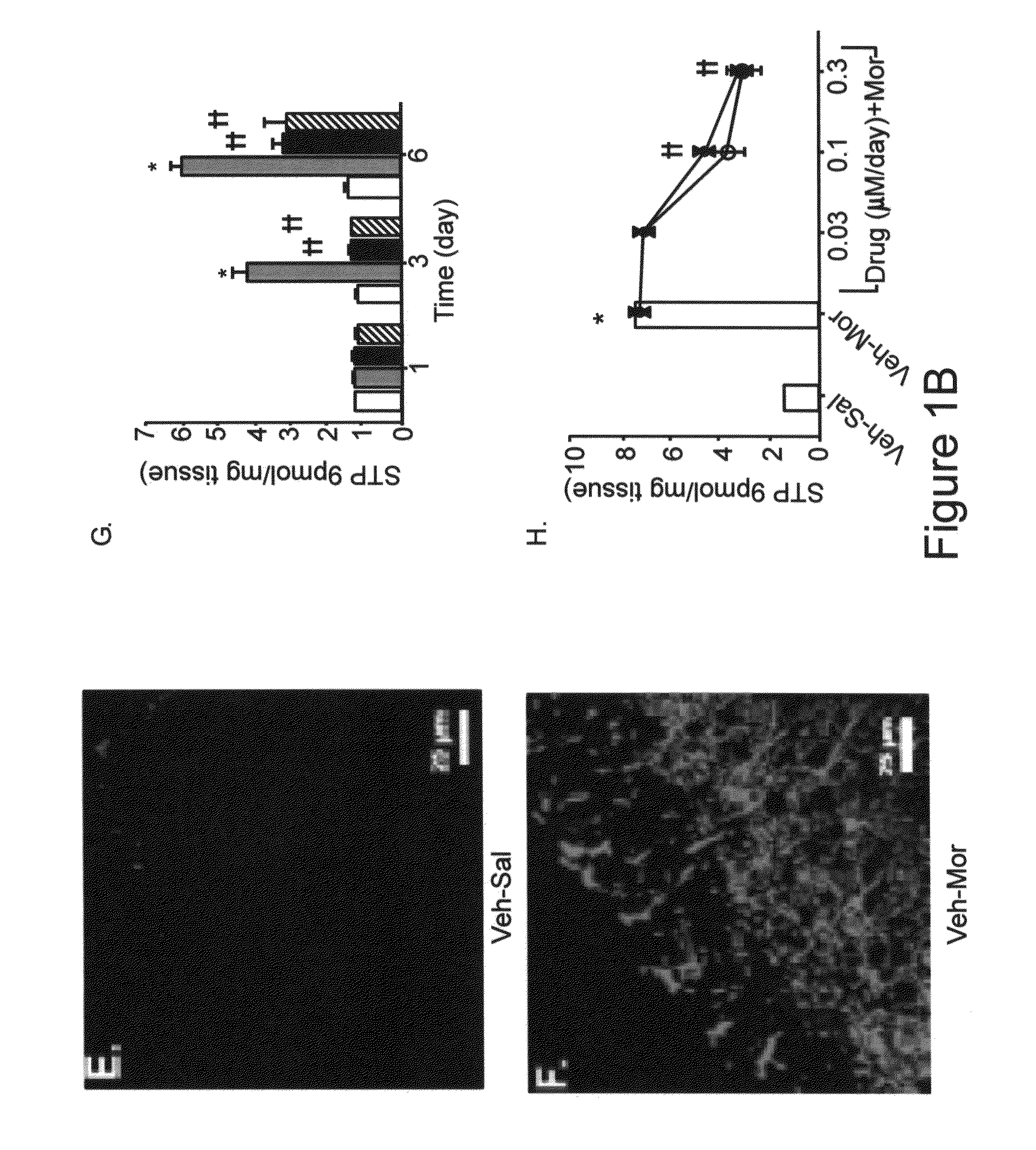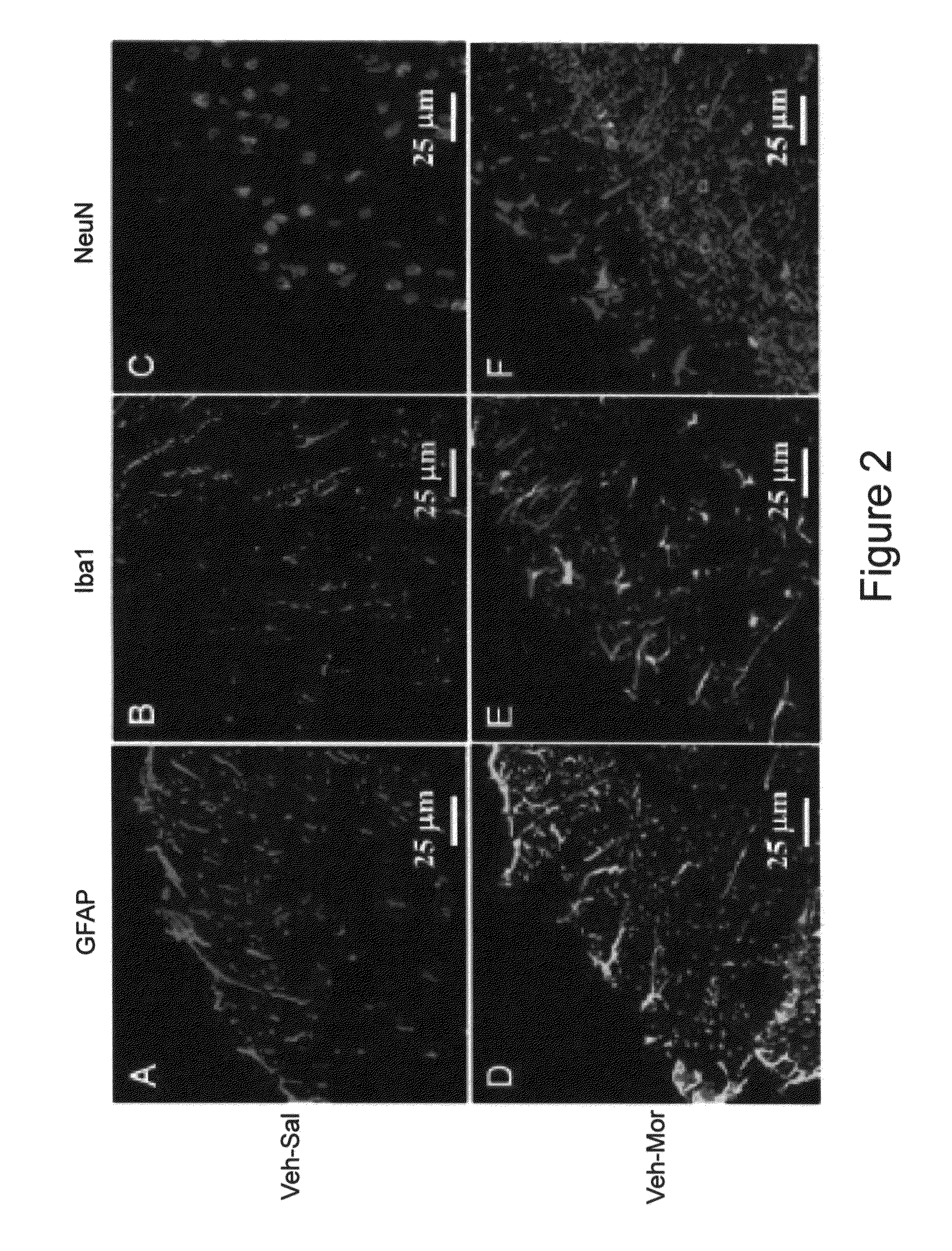Methods of treating pain
a technology of pain and treatment methods, applied in the field of methods, can solve the problems of insufficient pain treatment, escalating doses, distressing side effects,
- Summary
- Abstract
- Description
- Claims
- Application Information
AI Technical Summary
Benefits of technology
Problems solved by technology
Method used
Image
Examples
Embodiment Construction
[0090]The present invention stems from studies that were conducted to determine whether the involvement of spinal ceramide in opioid analgesic tolerance and hyperalgesia occurs via signaling through S1P. Through the pharmacological targeting of specific steps in the de novo and SMase pathways, it has been demonstrated, for the first time, that spinally-formed S1P is a key secondary messenger contributing to neuropathic pain, inflammatory pain, hypersensitivity, and antinociceptive tolerance, at least in part, through modulation of glial cell function. A varied platform approach of pharmacological manipulation is provided that can intercept the ceramide metabolic pathway at many levels to preempt and treat neuropathic pain, inflammatory pain, hypersensitivity, and antinociceptive tolerance.
[0091]In particular, it has been discovered that ceramide-derived S1P plays a key role in the development of morphine-induced hyperalgesia and antinociceptive tolerance, providing a novel mechanist...
PUM
| Property | Measurement | Unit |
|---|---|---|
| concentration | aaaaa | aaaaa |
| pH | aaaaa | aaaaa |
| pH | aaaaa | aaaaa |
Abstract
Description
Claims
Application Information
 Login to View More
Login to View More - R&D
- Intellectual Property
- Life Sciences
- Materials
- Tech Scout
- Unparalleled Data Quality
- Higher Quality Content
- 60% Fewer Hallucinations
Browse by: Latest US Patents, China's latest patents, Technical Efficacy Thesaurus, Application Domain, Technology Topic, Popular Technical Reports.
© 2025 PatSnap. All rights reserved.Legal|Privacy policy|Modern Slavery Act Transparency Statement|Sitemap|About US| Contact US: help@patsnap.com



